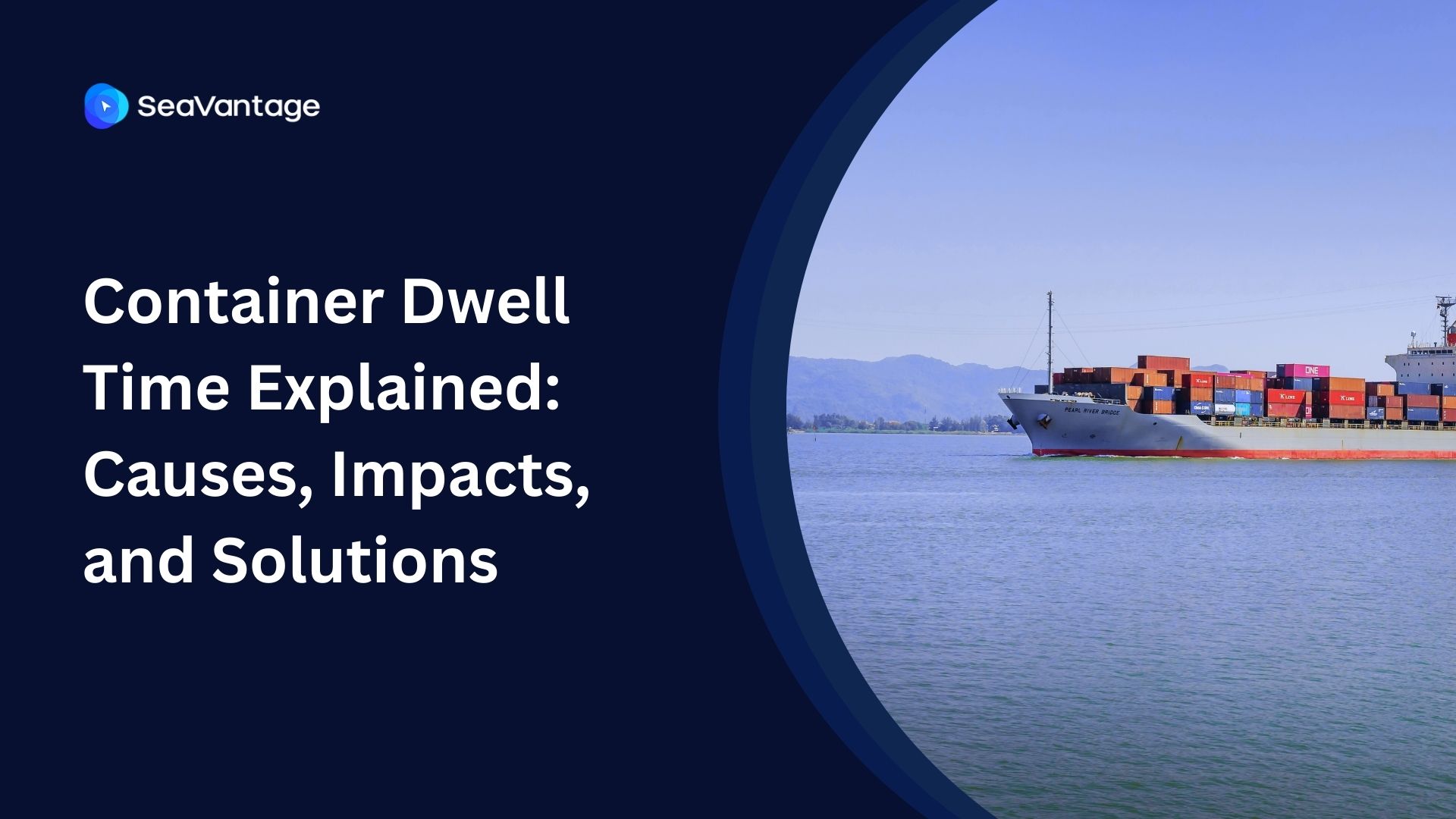How Are Shipping Containers Tracked? A Comprehensive Guide to Modern Tracking Technology

Introduction
In today's globalized economy, shipping containers are the backbone of international trade, facilitating the movement of approximately 90% of the world’s goods. These standardized steel boxes, capable of holding everything from electronics to perishable foods, enable efficient and economical transport across vast distances.
Importance of Tracking: Tracking shipping containers is critical for effective logistics and supply chains. Businesses rely on accurate data about their shipments to maintain optimal inventory levels, enhance operational efficiency, and reduce costs. Additionally, tracking improves security by addressing risks such as theft, damage, or misrouting, which can significantly impact a company’s bottom line.
Overview of the Article: In this guide, we will explore in detail how shipping containers are tracked using modern technologies. We’ll examine the key systems involved, the benefits they offer, the challenges faced in the industry, and future trends that could shape container tracking.
The Basics of Shipping Container Tracking
What Is Shipping Container Tracking?
Shipping container tracking refers to the methodologies and technologies employed to monitor the movement and status of containers throughout their journey. It involves collecting data on location, condition, and historical movement, ensuring stakeholders have real-time visibility into their cargo's journey.
Why Is Shipping Container Tracking Important?
Tracking is vital for several reasons:
- Real-Time Visibility: This allows shippers, freight forwarders, and customers to know the exact location and status of containers at any time, facilitating better planning and decision-making.
- Security: By reducing risks of theft and misplacement, tracking systems provide alerts for any anomalies, such as unauthorized movements.
- Operational Efficiency: Streamlined processes minimize delays, improve container management, and help avoid costly disruptions.
Types of Data Tracked
Key data points include:
- Location: GPS coordinates provide real-time positioning of containers on vessels, trucks, or trains.
- Status: Whether a container is empty, loaded, or undergoing customs inspections.
- Condition: Monitoring environmental factors such as temperature and humidity is crucial for sensitive cargo like pharmaceuticals and food products.
- Movement History: Tracking the entire route taken by the container helps in assessing performance and making future improvements.
Key Technologies Used to Track Shipping Containers
Automated Identification Systems (AIS)
AIS technology is a maritime tracking system that transmits real-time data regarding a ship's position, speed, and direction. By receiving signals from vessels equipped with AIS transponders, shipping companies can track container movements across oceans, making it easier to manage logistics and enhance safety.
Internet of Things (IoT) Sensors
IoT-enabled sensors have revolutionized container tracking by allowing for continuous monitoring of various conditions:
- Temperature Sensors: Crucial for goods requiring specific temperature controls, like perishables or pharmaceuticals. For example, a container transporting vaccines may be equipped with temperature sensors to ensure they remain within required limits.
- Humidity Sensors: Monitor moisture levels to protect cargo sensitive to humidity, like electronics and certain food products.
- Shock Detection Sensors: These alert operators to any impacts or disturbances during transit, helping to prevent damage to fragile cargo.
Benefits: Real-time condition monitoring aids in ensuring that sensitive cargo arrives in optimal condition, reducing the risk of spoilage or damage.
Global Positioning System (GPS)
GPS is a cornerstone technology in container tracking. It provides precise location updates for containers, enabling shipping companies to monitor their fleets in real time.
Example: Major shipping companies, such as Maersk and MSC, utilize GPS technology to optimize routing and improve operational efficiency. This allows them to anticipate delays and adjust plans accordingly, ensuring timely deliveries.
How Shipping Containers Are Tracked in Different Modes of Transport
Sea Transport
In maritime logistics, technologies like GPS, AIS, and IoT sensors work in tandem. However, challenges such as signal loss in deep waters can complicate tracking efforts. To mitigate this, shipping companies often employ satellite-based tracking solutions that can provide coverage in remote areas.
Rail Transport
For rail logistics, container tracking technologies include RFID (Radio Frequency Identification) tags and GPS systems. These enable real-time updates on container movements and status. Efficient tracking is essential in rail transport due to the fixed schedules and routes, where timely updates can prevent bottlenecks and delays.
Road Transport
Container trucks leverage GPS and telematics systems for tracking. Telematics can provide additional data on vehicle performance and driver behavior, enhancing overall logistics management. This technology is particularly beneficial for last-mile delivery, where real-time tracking can optimize routes and reduce delivery times.
The Benefits of Modern Container Tracking Systems
1. Increased Visibility and Control
Real-time tracking enhances visibility across the supply chain, allowing logistics managers to predict delivery times more accurately. Customers can also track their shipments, improving transparency and satisfaction.
2. Improved Security
Tracking systems reduce the risks of theft and loss by providing location data and alerts. Geofencing technology can notify authorities if containers deviate from their planned routes, enabling rapid response to potential threats.
3. Enhanced Operational Efficiency
Tracking systems help optimize shipping routes and reduce idle time by providing actionable data on container locations and statuses. For instance, if a container is delayed, logistics managers can reallocate resources to prevent bottlenecks.
4. Cost Savings
By minimizing theft, reducing losses, and improving inventory management, businesses can achieve significant cost savings. Efficient tracking can also lower insurance premiums due to reduced risk exposure.
5. Environmental Benefits
Efficient tracking systems contribute to sustainability by optimizing transport routes, which can reduce carbon emissions. For instance, logistics companies can plan consolidated shipments, decreasing the number of trips needed.
Challenges and Limitations in Shipping Container Tracking
1. Global Coverage Issues
Tracking containers can be particularly challenging in remote areas or oceans where traditional signals may be weak. Solutions include combining satellite tracking with terrestrial networks to provide comprehensive coverage.
2. Infrastructure Variations Across Countries
Differences in port infrastructure, customs regulations, and regulatory standards can affect tracking efficiency and reliability. For instance, ports with advanced tracking technology may outperform those in regions with less developed infrastructure.
3. Data Security and Privacy Concerns
With the rise of digital tracking comes the responsibility of protecting sensitive shipping data from cyberattacks. Companies must invest in encryption and secure networks to safeguard their information against potential breaches.
4. Cost of Implementing Advanced Tracking Systems
The initial investment for advanced tracking systems can be a barrier for smaller businesses or logistics companies in developing regions. However, balancing these costs with long-term operational benefits is crucial for growth.
Future Trends in Shipping Container Tracking
1. AI and Predictive Analytics
Artificial intelligence is being increasingly integrated into tracking systems to analyze data patterns, predict delays, and optimize shipping routes. For example, AI algorithms can assess historical shipping data to forecast congestion at ports, allowing companies to plan accordingly.
2. 5G Networks and Improved IoT Connectivity
The rollout of 5G technology is set to enhance the accuracy and efficiency of container tracking, offering faster data transmission and improved connectivity for IoT devices.
3. Blockchain and Smart Contracts
Blockchain technology is poised to revolutionize shipping by securing container data and automating transactions through smart contracts. This can enhance transparency and trust in the supply chain, reducing the risk of fraud.
4. Drone and Satellite-based Container Monitoring
Emerging technologies such as drones and satellites are being explored for monitoring container movements more efficiently. Drones can provide real-time visual inspections of cargo areas, while satellites can track containers in areas beyond traditional coverage.
SeaVantage Container Tracking
For those seeking robust tracking solutions, SeaVantage offers advanced container tracking technologies that leverage IoT, AIS, and AI, providing comprehensive visibility and control over shipping operations.
Conclusion
In summary, modern tracking technologies have transformed the shipping industry, providing essential tools for managing logistics and supply chains. By leveraging systems like GPS, AIS, and IoT sensors, businesses can achieve increased visibility, improved security, and enhanced operational efficiency.
As the shipping industry continues to evolve, adopting advanced tracking systems will be crucial for businesses looking to thrive in a competitive landscape.
We encourage businesses to explore and invest in container tracking technologies to enhance their logistics management and improve supply chain operations. The future of shipping is here, and it’s time to embrace it.
2025년 8월, 주요 글로벌 항만에서 어떤 운송사가 가장 긴 선박 체류 시간을 기록했는지 확인해보세요. 트렌드를 비교하고, 지연을 파악하며, 전체 항만 데이터를 통해 운송 전략을 최적화할 수 있습니다.
2025년 7월, 주요 글로벌 항만에서 어떤 운송사가 가장 긴 선박 체류 시간을 기록했는지 확인해보세요. 트렌드를 비교하고, 지연을 파악하며, 전체 항만 데이터를 통해 운송 전략을 최적화할 수 있습니다.
2025년 6월 글로벌 주요 항만의 선사별 선박 체류 시간을 분석했습니다. MoM·YoY 비교로 대기·작업 시간, 항만 성과와 지연 추세를 확인하세요.
Integrate a Vessel Tracking API to gain real-time shipping visibility. Learn how to automate tracking, manage disruptions, and reduce costs in our 2025 guide.
Build a powerful container tracking dashboard for 2025. This guide shows you how to gain real-time supply chain visibility to navigate global shipping uncertainty, reduce costs, and boost efficiency
Reduce port congestion and cut supply chain costs with our 2025 guide on container dwell time. Learn the key stages, see the latest data from major ports, and implement expert strategies to improve logistics efficiency.



.svg)





.png)